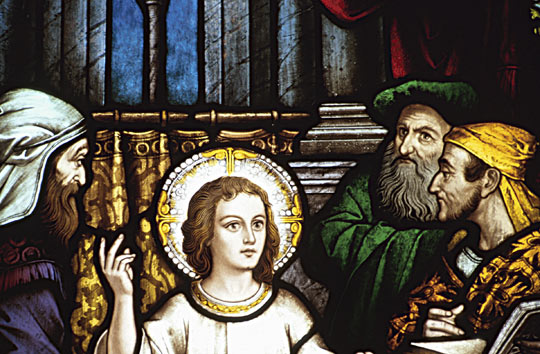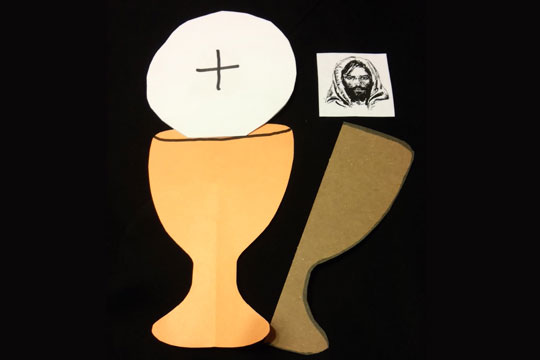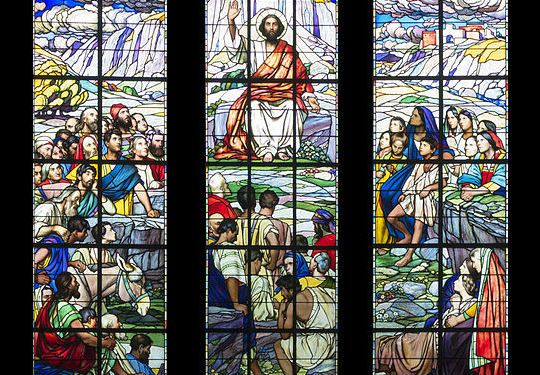
We know little about the life of Jesus as he grew up, but the one story we have of him as an adolescent can form the basis of a session on family and mission. Using Finding God, Grade 7, Chapter 9, my group will talk about how Jesus grew in age, wisdom, and grace—and what difference it makes to the life of a contemporary junior-high student.
We’ll begin by studying the story of the 12-year-old Jesus in the Temple. (Luke 2:41–52) After reading and discussing the elements of the story, we will transition to a discussion on mission. Jesus’ special mission in life was becoming apparent as he asked questions of the Temple teachers, but he still had things to learn from living as a part of a family with Mary and Joseph. Our family makes up the domestic church, which is where we first learn how to live as a part of God’s family.
As young people grow and mature, they start to ask more questions outside the family, and those questions and the life experiences they have help them in seeking their own life’s mission. This is a good time to introduce the idea of discernment. While one religious education session isn’t enough time to explore fully the details of discernment, I can still lay the general groundwork for Spirit-led decision-making. I will offer three steps to help the young people start to discern their mission:
- Think about what you want to do when you grow up. You may have a specific job in mind already or perhaps not. Either way, you might have a general goal, for instance, helping people.
- That goal becomes your life’s mission. How you achieve that mission can eventually take many paths—serving a non-profit, working in politics for social change, becoming a doctor or an environmentalist or a teacher.
- Sort out what your gifts and talents are that can lead to finding and living your mission.
Next I’ll lead a discussion on how we can sort out the possibilities for seeking our mission. We can consider what we enjoy doing with our families and the values that our families have instilled within us. We should think about the activities we participate in with friends and which of those we prefer. And we should pray! Prayer helps us to sort out the patterns and gifts in our lives and leads us to what God calls us to do.
This will be a good time to introduce young people to the Examen. This form of prayer invites reflection on the immediate events of the day and over time can make clear patterns that can help in good decision-making.
As we conclude the session, we remember that our families are there to help us grow in wisdom and grace, just as Mary and Joseph did for Jesus.





Thanks Denise, for linking Jesus’ youth and discernment of His mission to the lives of our youth! I teach Salvation History to 6th graders, and also find that they are starting to become aware of how they fit into God’s plan – that He has a mission for each and every one of them.
When we study the call of Moses and his initial concerns about not being a good choice for a leader, we have the students reflect a bit on their talents, personalities, and values. We reinforce that God’s mission for them might be “big” or might involve just leading a few people closer to God. They are asked to give an example of how they influenced others by their example, or helped someone who was facing a problem.
Mary, thanks for sharing how you cover the idea of mission in your class. Making the connections between Scripture and daily life is so important, and it’s a groundwork like that in sixth grade that can make it easier for us seventh-grade catechists.
Thanks to your help when I led this paragraph I found many helpful I can say thank you may God bless your way and your knowledge